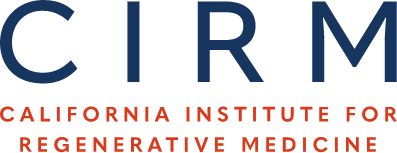Oral and Craniofacial Reconstruction Using Mesenchymal Stem Cells
Grant Award Details
Grant Type:
Grant Number:
RN1-00572
Investigator(s):
Disease Focus:
Human Stem Cell Use:
Award Value:
$3,242,651
Status:
Closed
Progress Reports
Reporting Period:
Year 2
Reporting Period:
Year 3
Reporting Period:
Year 4
Reporting Period:
Year 5
Reporting Period:
NCE
Grant Application Details
Application Title:
Oral and Craniofacial Reconstruction Using Mesenchymal Stem Cells
Public Abstract:
The overall goal of this proposal is to explore a new stem cell-based treatment for major defects in the orofacial regions resulted from burns, physical injuries, genetic diseases, cancers, infectious diseases, and recently, bisphosphonate-associated osteonecrosis of the jaw (BONJ), using the patient’s own stem cells obtained from the oral cavity known as orofacial mesenchymal stem cells (OMSCs).
The standard surgical reconstruction of orofacial defects relies on different sources of bone grafts harvested from distant anatomical site of the same patient or other donors. However, those approaches are associated with higher morbidity and unpredictable clinical outcomes. Evidences have shown that bone marrow mesenchymal stem cells (BMMSCs) could be a promising alternative for bone reconstruction but not in the orofacial region. These clinical results may be due, in part, to the fact that orofacial and long bones are derived from different cell origins, termed as neural crest cells and mesoderm, respectively. In addition, OMSCs are readily accessible from the oral cavity and can be easily expanded for cell-based therapies due to their inherently high proliferative capability. These evidences suggest that neural crest cell-associated OMSCs might be a superior cell source for orofacial bone regeneration as compared to BMMSCs.
In this study we will compare human OMSCs and BMMSCs in terms of stem cell characteristics and will test their tissue regeneration capacities in the restoration of orofacial defects including the recently drug-induced bone necrosis defects caused by the commonly used drug, bisphosphonate in our established animal models. Our laboratories have recently demonstrated feasibility of using BMMSCs to partially repair craniofacial defects in mouse models. In this proposed study, we will use OMSCs as a model system to determine whether and how individual OMSCs can be utilized as a novel cell therapy for orofacial tissue regeneration. We anticipate that the patient’s own OMSCs will be capable of forming orofacial tissues and will highlight future clinical treatments for orofacial defects.
The standard surgical reconstruction of orofacial defects relies on different sources of bone grafts harvested from distant anatomical site of the same patient or other donors. However, those approaches are associated with higher morbidity and unpredictable clinical outcomes. Evidences have shown that bone marrow mesenchymal stem cells (BMMSCs) could be a promising alternative for bone reconstruction but not in the orofacial region. These clinical results may be due, in part, to the fact that orofacial and long bones are derived from different cell origins, termed as neural crest cells and mesoderm, respectively. In addition, OMSCs are readily accessible from the oral cavity and can be easily expanded for cell-based therapies due to their inherently high proliferative capability. These evidences suggest that neural crest cell-associated OMSCs might be a superior cell source for orofacial bone regeneration as compared to BMMSCs.
In this study we will compare human OMSCs and BMMSCs in terms of stem cell characteristics and will test their tissue regeneration capacities in the restoration of orofacial defects including the recently drug-induced bone necrosis defects caused by the commonly used drug, bisphosphonate in our established animal models. Our laboratories have recently demonstrated feasibility of using BMMSCs to partially repair craniofacial defects in mouse models. In this proposed study, we will use OMSCs as a model system to determine whether and how individual OMSCs can be utilized as a novel cell therapy for orofacial tissue regeneration. We anticipate that the patient’s own OMSCs will be capable of forming orofacial tissues and will highlight future clinical treatments for orofacial defects.
Statement of Benefit to California:
There is a great clinical demand for developing more optimized approaches to repair facial defects caused by burns, trauma, genetic anomalies, cancers, and recently, the devastating drug-induced osteonecrosis of the jaw associated with the commonly used drug, bisphosphonate (BONJ). Current therapeutic approaches are deficient in supplying appropriate tissues for major facial reconstruction. By generating an optimal supply of human orofacial mesenchymal stem cells (OMSCs) for stem cell-based therapy, we hope to circumvent the limited tissue resource and provide a more superior cell source for future facial tissue regeneration. More importantly, Californians who are head and neck cancer survivors, or suffer esthetic and functionally debilitating orofacial defects will benefit from the advances in stem cell biology and its clinical applications, specifically in the field of orofacial reconstruction. In this proposal, we will expand current knowledge of stem cell biology of OMSC and test the feasibility of utilizing these autologous stem cells in the treatment of diseases such as BONJ. The novel approach in the reconstruction of the orofacial defects using OMSC-based therapy will replace standard paradigm of treatment which involves multiple surgeries, lengthy operating time, cost, and morbidity to the patients. The success of this proposal will not only benefit the people of California, but will have high impact on the state economy by reducing the medical cost and overall financial burden on the State of California Health Insurance.
Publications
- Stem Cells Dev (2011): 3D-Spheroid Culture of Human Gingiva-Derived Mesenchymal Stem Cells Enhances Mitigation of Chemotherapy-Induced Oral Mucositis. (PubMed: 21689066)
- Oral Dis (2011): Basic fibroblast growth factor inhibits osteogenic differentiation of stem cells from human exfoliated deciduous teeth through ERK signaling. (PubMed: 22151351)
- J Bone Miner Res (2010): Cell-based immunotherapy with mesenchymal stem cells cures bisphosphonate-related osteonecrosis of the jaw-like disease in mice. (PubMed: 20200952)
- Invest Ophthalmol Vis Sci (2011): Identification of multipotent stem/progenitor cells in murine sclera. (PubMed: 21788434)
- Stem Cells (2013): IFN-gamma and TNF-alpha Synergistically Induce Mesenchymal Stem Cell Impairment and Tumorigenesis via NFkappaB Signaling. (PubMed: 23553791)
- Nat Med (2011): Mesenchymal stem cell-based tissue regeneration is governed by recipient T lymphocytes via IFN-gamma and TNF-alpha (PubMed: 22101767)
- Cell Stem Cell (2012): Mesenchymal-Stem-Cell-Induced Immunoregulation Involves FAS-Ligand-/FAS-Mediated T Cell Apoptosis. (PubMed: 22542159)
- Blood (2009): Mesenchymal stem cell-mediated ectopic hematopoiesis alleviates aging-related phenotype in immunocompromised mice. (PubMed: 19074727)
- Stem Cells (2009): Mesenchymal stem cell transplantation reverses multiorgan dysfunction in systemic lupus erythematosus mice and humans. (PubMed: 19489103)
- J Immunol (2009): Mesenchymal stem cells derived from human gingiva are capable of immunomodulatory functions and ameliorate inflammation-related tissue destruction in experimental colitis. (PubMed: 19923445)
- Cell Transplant (2012): Mesenchymal stromal cell-based treatment of jaw osteoradionecrosis in Swine. (PubMed: 22469112)
- Oral Dis (2012): Non-exposed bisphosphonate-related osteonecrosis of the jaw: a critical assessment of current definition, staging, and treatment guidelines. (PubMed: 22420684)
- Cell Stem Cell (2013): Ossifying Fibroma Tumor Stem Cells Are Maintained by Epigenetic Regulation of a TSP1/TGF-beta/SMAD3 Autocrine Loop. (PubMed: 24209761)
- PLoS One (2009): Tumor-like stem cells derived from human keloid are governed by the inflammatory niche driven by IL-17/IL-6 axis. (PubMed: 19907660)
- Oral Dis (2010): Utility of PDL progenitors for in vivo tissue regeneration: a report of 3 cases. (PubMed: 20355278)
- J Cell Physiol (2011): Vitamin C treatment promotes mesenchymal stem cell sheet formation and tissue regeneration by elevating telomerase activity. (PubMed: 22105792)



